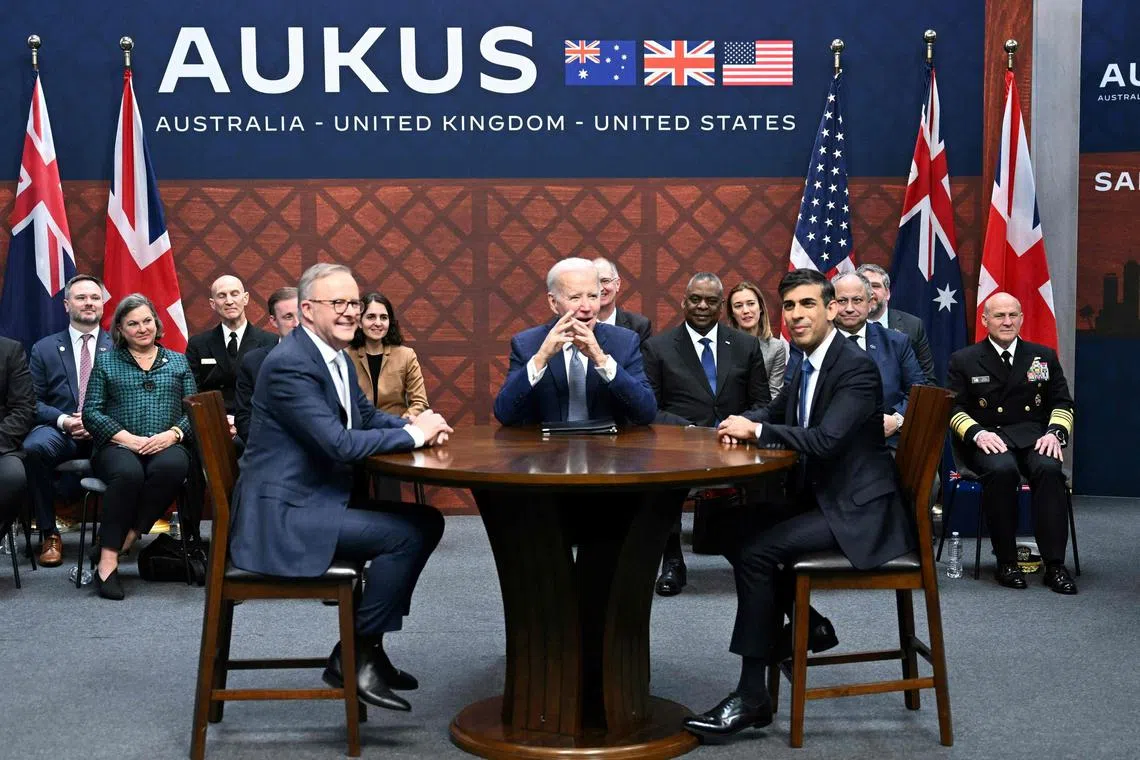For subscribers
China and other risks lurking beneath the Aukus deal
It’s a multi-decade, multibillion-dollar, multinational submarine deal. But deeper questions remain, including whether the subs will really help to deter China from its strategic challenge to the US-led order in Asia.
Sign up now: Get ST's newsletters delivered to your inbox

(From left) Australian PM Anthony Albanese, US President Joe Biden and British PM Rishi Sunak at the Aukus summit in California on March 13.
PHOTO: AFP
Follow topic:
Eighteen months ago, when Aukus first saw the light of day, it was hailed as the grandest of strategic masterstrokes – an audacious vision for America, Britain and Australia to work together to equip the Australian navy with nuclear-powered attack submarines. Now, with this week’s announcement by the three countries’ leaders of the outline of a plan to make it all happen, the vision looks even bigger and bolder.
In just a few years, America and Britain will begin to rotationally deploy up to five of their nuclear-powered submarines


